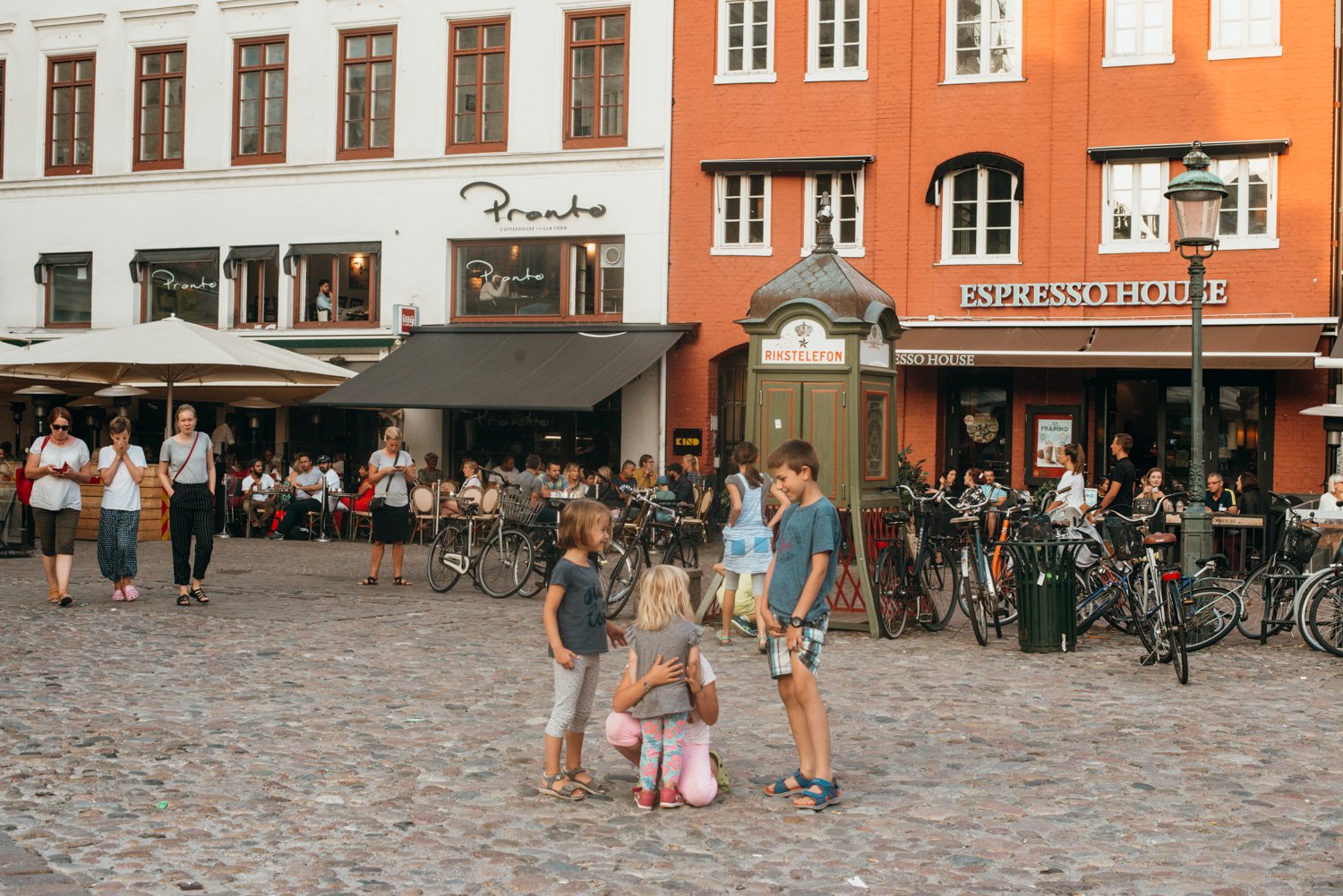Midsummer Magic in Sweden
The summer solstice happens on the longest day of the year, ushering in the official start to summer. And there’s no better place to celebrate it than in Sweden.
Twice a year, Earth reaches its maximum tilt toward the sun marking the winter and summer solstices, one in each hemisphere.
The summer solstice, which takes place in June everywhere above the equator, occurs on the longest day (and shortest night) of the year and ushers in the official start to summer. Due to its cosmic alignments, this sun-centric solstice is a magical opportunity to tap into nature’s cyclical changes. All over the world and throughout human history, cultures have timed important rituals and ceremonies around this event. In El Salvador, Mayans still celebrate the summer solstice by congregating at archeological sites like Taxumal. Thousands of Quechua people gather on the shores of Lake Titicaca on this special date. Throngs of yogis participate in mass yoga classes in New York’s Times Square. And the list goes on.
But the Swedish Midsommar festivities – a full-on immersion in seasonal beauty and bounty – may just be our favorite version of this holiday. In Scandinavia, one of the regions of the world with the least amount of sunshine during the winter, the summer solstice represents rebirth on every level. The leaves are at their greenest, the flowers at their merriest, and spirits run high. Residents of Sweden capture this joy by gathering outdoors, dancing, and sharing a meal as a community. Nature plays a vital role in this celebration that has honored the fertile summer season since pagan times.
It is this direct connection with the sun and the natural world that make the Midsommar festivities an event to experience at least once in a lifetime, and the perfect highlight to any family visit to the country.
How to Midsommarstång
Midsummer Eve, always celebrated on a Friday close to the summer solstice in Sweden, falls on June 23 this year. Because of the ritual’s deep ties to nature, most Swedes head to the countryside around this date. Still, some festivities do take place in the city, oftentimes in parks and other communal areas. Rural or urban as the case may be, the locale always features a maypole, which gets its name not from the month, but from “maja,” the Swedish word for the ubiquitous green decor. Attendees are welcome to help decorate by picking flowers, weaving them into wreaths and garlands, and installing the adorned pole – also known as the Midsommarstången – in a central position.
“We start with picking flowers, making our own Midsommarstång, and we spend time dancing around the pole while singing some songs. Afterwards we eat and celebrate. It's a super nice swedish tradition.”
— Kaatje Jacob, Sadnasgard Alpaca Tours
After the area has been beautified, the day picks up around noon with a family-oriented picnic. Classic dishes range from new potatoes with dill to strawberry cake, highlighting fresh, seasonal produce that tastes its best this time of year. Adults enjoy liqueurs made from local ingredients such as elderflower, with the emphasis on tradition, camaraderie, and the composition of endless new drinking songs. Swedish staples such as pickled herring, smoked salmon, and meatballs are also a must. Over the course of the picnic, more and more people gravitate toward the maypole to take part in dances such as the små grodorna, where children and grown-ups alike hop around the circle like frogs.
On Midsummer Traditions
“A Swedish custom that has survived beautifully to this day says that when young, unmarried women put seven (in some places nine) different wildflowers under their pillows, they dream of their future lover on Midsummer's Eve.
Typical Midsummer flowers are daisies, clover blossoms, cornflowers and everything else you can find along the way. The flowers had to be picked by the young women in silence, lest the magic be interrupted.” — Eva Mae Ritter, Nordaway
When all have eaten, danced, and sung to their heart’s desire, it’s time for the games. Traditional lawn games like croquet play out alongside the Swedish kubb, which involves knocking down wooden pins and arguing amicably over the rules. Games may give way to more dancing as the night wears on, but the sky stays light until morning. Above the Arctic Circle in Swedish Lapland, the sun doesn’t set at all at this time of year, and midsummer revelers of all ages can dance under the midnight sun.
Midsummer Eve is not only a great family-friendly party in tune with Earth’s rhythms, but it also represents of a larger commitment to the environment seen across Sweden and Scandinavia. Characterized by an emphasis on community and a stalwart social system, some of the biggest swaths of protected forest left in the world, and a deeply ingrained love of the outdoors, the region seems to have found the key to transforming age-old traditions into a model of sustainability for the future. The Allemansrätten, a set of laws that allow free access to public land across Sweden, keep this love and respect for nature alive all year round.
Where to Celebrate Midsummer in Sweden
Even though most locals head out to the the countryside to celebrate Midsummer, festivities can be found all over the country. We’ve curated a small collection of tips if visiting Sweden during Midsummer—
Dalarna
The cultural heart of Sweden, with endless traditional and folk festivals. Kaatje Jacob of Sadnasgard Alpaca Farm mentions that their little town in Furudal they “start on Thursday after solstice with poles and singing.” There are multiple events happening all over the county throughout the weekend, including the 10-day Church Boat Race— the procession of wooden longboats in different locations throughout Lake Siljan.
Swedish Lapland
The northernmost part of Sweden where the sun never sets this time of year, dancing around the maypole under the Midnight Sun is a perfect counterpoint to seeing the Northern Lights on the opposite side of the calendar. Head up to Saltoluokta Mountain Station in the stunning UNESCO-recognized Laponia and celebrate in a church hut with a herring lunch, amongst other regional delights. Aatje, the Swedish Mountain and Sámi Museum in Jokkmokk, hosts a Midsummer celebration with Sami elements, and at the ski resort Riksgränsen on the Norwegian border, you can actually still ski during Midsummer, provided that there is enough snow. Imagine skiing under a Midnight Sun (and maypole dancing in your ski boots!).
Gothenburg
Named the world’s most sustainable city six years in a row, it’s obvious we’re fans of supporting Gothenburg both during Midsummer and beyond. But if you’re here through the summer solstice weekend, stop by Slottsskogen city park as well as on the archipelago for traditional festivities. Make sure you have a “rescued” lunch at Restaurang Svinn or do a beach cleanup with Skärgårdsidyllen kayak school while you’re there.
Stockholm
Don’t forget the capital of Sweden also has a ton of Midsummer events both in the city and on the archipelago— Södermalm has the family-friendly Midsummer at Mosebacketerassen, the most traditional celebrations can be found at Skansen open-air museum, take an hour boat ride out to Grinda, or in Vaxholm, which is reachable by bus or car.
Sustainable Travel in Sweden
With sustainability running through the threads of daily life in Sweden (home of Greta Thunberg, above-mentioned Gothenberg, early-adopter electrified bus routes, urban farming and one of the world’s tallest wooden buildings), it comes as no surprise that the Scandinavian country has become a banner destination for responsible travel. In a Sustainable Travel Index Report from Euromonitor International in 2020, Sweden ranked first out of 99 countries. While a long-haul flight might be required to get there, a trip planned around Midsummer Eve could easily form part of a longer road trip through the region, or even a stop along a scenic train journey. Thanks to the above-mentioned Allemansrätten, a wide variety of accommodations that meet the stringent Nordic ecolabel requirements, and its overarching ethos of ecotourism, Sweden makes a great option for a family getaway around the Midsommar celebrations – or any time of year, really.







